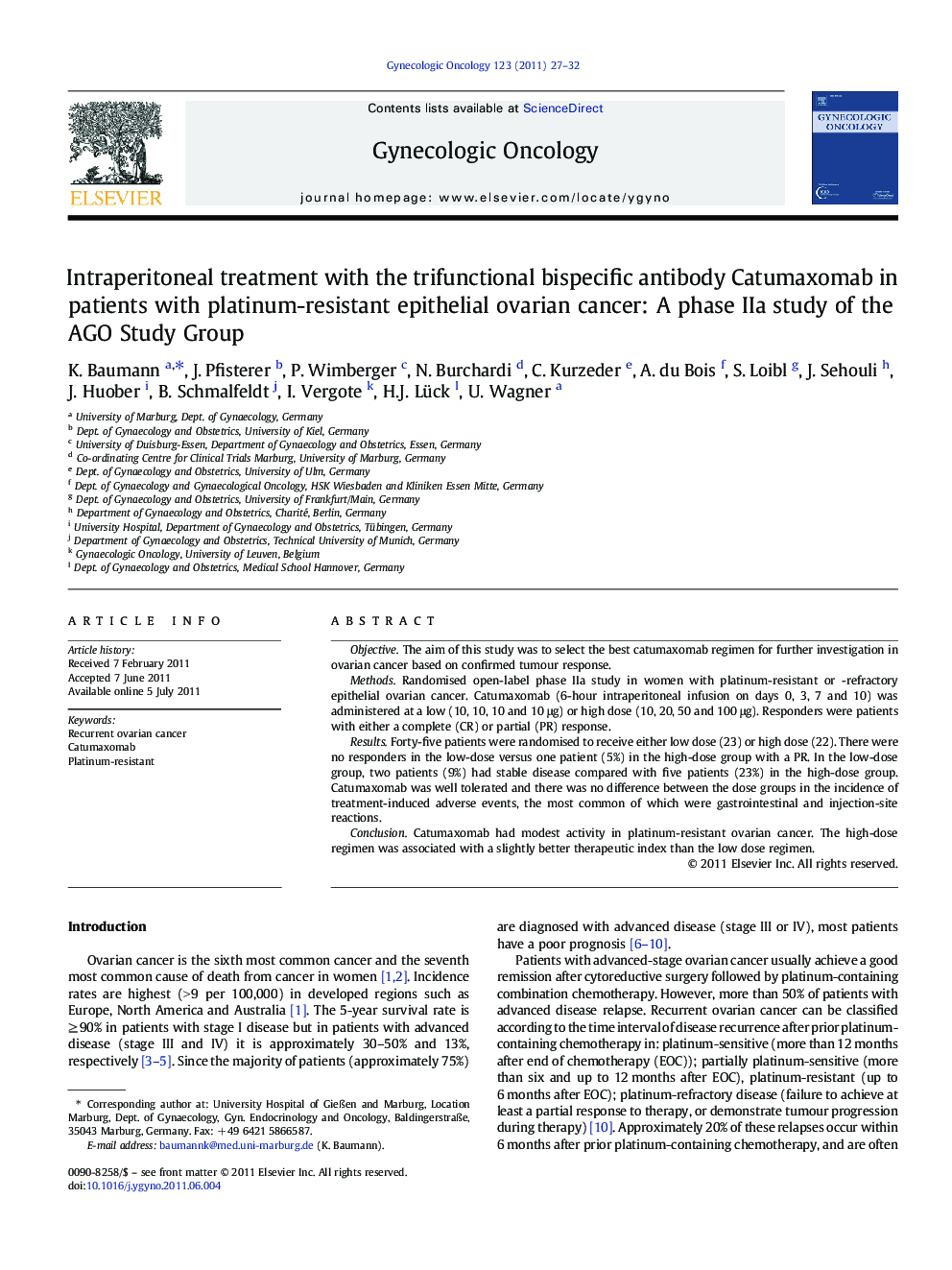| Article ID | Journal | Published Year | Pages | File Type |
|---|---|---|---|---|
| 3947029 | Gynecologic Oncology | 2011 | 6 Pages |
ObjectiveThe aim of this study was to select the best catumaxomab regimen for further investigation in ovarian cancer based on confirmed tumour response.MethodsRandomised open-label phase IIa study in women with platinum-resistant or -refractory epithelial ovarian cancer. Catumaxomab (6-hour intraperitoneal infusion on days 0, 3, 7 and 10) was administered at a low (10, 10, 10 and 10 μg) or high dose (10, 20, 50 and 100 μg). Responders were patients with either a complete (CR) or partial (PR) response.ResultsForty-five patients were randomised to receive either low dose (23) or high dose (22). There were no responders in the low-dose versus one patient (5%) in the high-dose group with a PR. In the low-dose group, two patients (9%) had stable disease compared with five patients (23%) in the high-dose group. Catumaxomab was well tolerated and there was no difference between the dose groups in the incidence of treatment-induced adverse events, the most common of which were gastrointestinal and injection-site reactions.ConclusionCatumaxomab had modest activity in platinum-resistant ovarian cancer. The high-dose regimen was associated with a slightly better therapeutic index than the low dose regimen.
Research highlights► Catumaxomab is a trifunctional antibody specifically binding to EpCAM+ epithelial cancer cells, and to ovarian cancer cells alike. ► This phase II study investigated the effects of catumaxomab on platinum-resistant ovarian cancer. ► Catumaxomab has modest growth inhibitory effects on platinum-resistant ovarian cancer.
